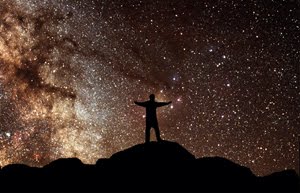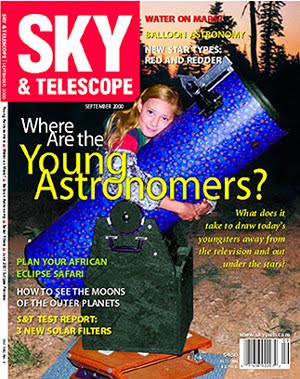No, not Oz, but my own "out back", just west of the swimming pool at La Caja de Los Gatos Observatory....
Last night I uncovered and collimated the 14.5" f/5.6 that has been waiting, under wraps, for what seems an eternity. The conditions were very pleasant and after letting the primary cool down (I think it was baking all day covered with a dark tarp) I settled in for about an hour of fun, frustration and fascination.
I decided to use the Night Sky Observers Guide (NSOG) and play around in Serpens Caput, which was nicely placed at 10 p.m. My other references were Tirion's Sky Atlas 2000 Deluxe, an old Uranometria 2000, 20 and 12 Naglers (type II), Telrad and University Optics 11x70 finder. I had a warm Mexican Coffee to sip on, to help me split some double stars.
I began with a wonderful field. 5 Serpentis is an easy split at 103X, showing its bright yellow primary and dim red companion quite well to the NNE. A third member of the system is much more distant, and I did not hunt it down. The great globular cluster M5 shares a lower power field with 5 Serpentis.
M5 just would not leave me alone. The more I looked at it, the more I saw. I was very pleased that I took time to touch up the collimation on the scope.... for deep sky observing it really pays off on objects like globulars. M5 was truly beautiful, condensing to a bright core overlayed by individual halo stars. The core was distinct from the extended halo. The halo appeared sparser to the W and seemed to almost "curve" back around the core to the S, N and finally trailing off to the E, almost like a bow shock and wake peeling around and away from the object. As I looked even more, I saw two halos of stars around the (unresolved) core... the first halo was distinct from the core, and had resolved stars. It extended about three core diameters, with the core slightly off center to the W. This halo was still quite active, with many resolvable bright stars. Then I noted another more distended halo beyond the one surrounding the core. This second halo was perhaps half as populated as the inner one, and varied in its width from about 1/3 to 1/2 the diameter of the inner halo. The outer halo was unevenly distributed, with less stars to the W and NW, and thinning a bit to the E. These observations were made at 172X, and to say it was transfixing certainly states the obvious.
Next on the list was 13 Serpentis, what I would call a classical bright close double. Easy to find too! Both stars are clean white, although IIRC, the book called them yellow. To me, there was no mistake... white as can be. The stars are unequal magnitude, but not greatly different as was 5 Serpentis.
For a really wonderful color contrast, I moved to Struve 300, a nice wider double star containing a bright golden primary and dim deep blue (maybe even purple?) companion. The color makes it woth the trip.
I made NGC 5921 my last object, as I saw lights in the house turning off and thought I better save a bit for Friday and Saturday nights. 5921 was moderately difficult, even though it is a 4 star object in the NSOG. This galaxy is set in a busy field of perhaps half a dozen stars. The first thing I noticed was the core of the galaxy was quite stellar, and appeared in line with two other nearly equal magnitude stars forming a line to its W. As I would avert my vision, I could see the galaxy was dim and extended, containing a brighter inner halo that may be off axis to the main WWNW/EESE extension of the galaxy.
That was it. Two minutes to put away eyepieces and point the scope down, and I was in the door.
Its great, being able to get in an hour observing "out back"....











